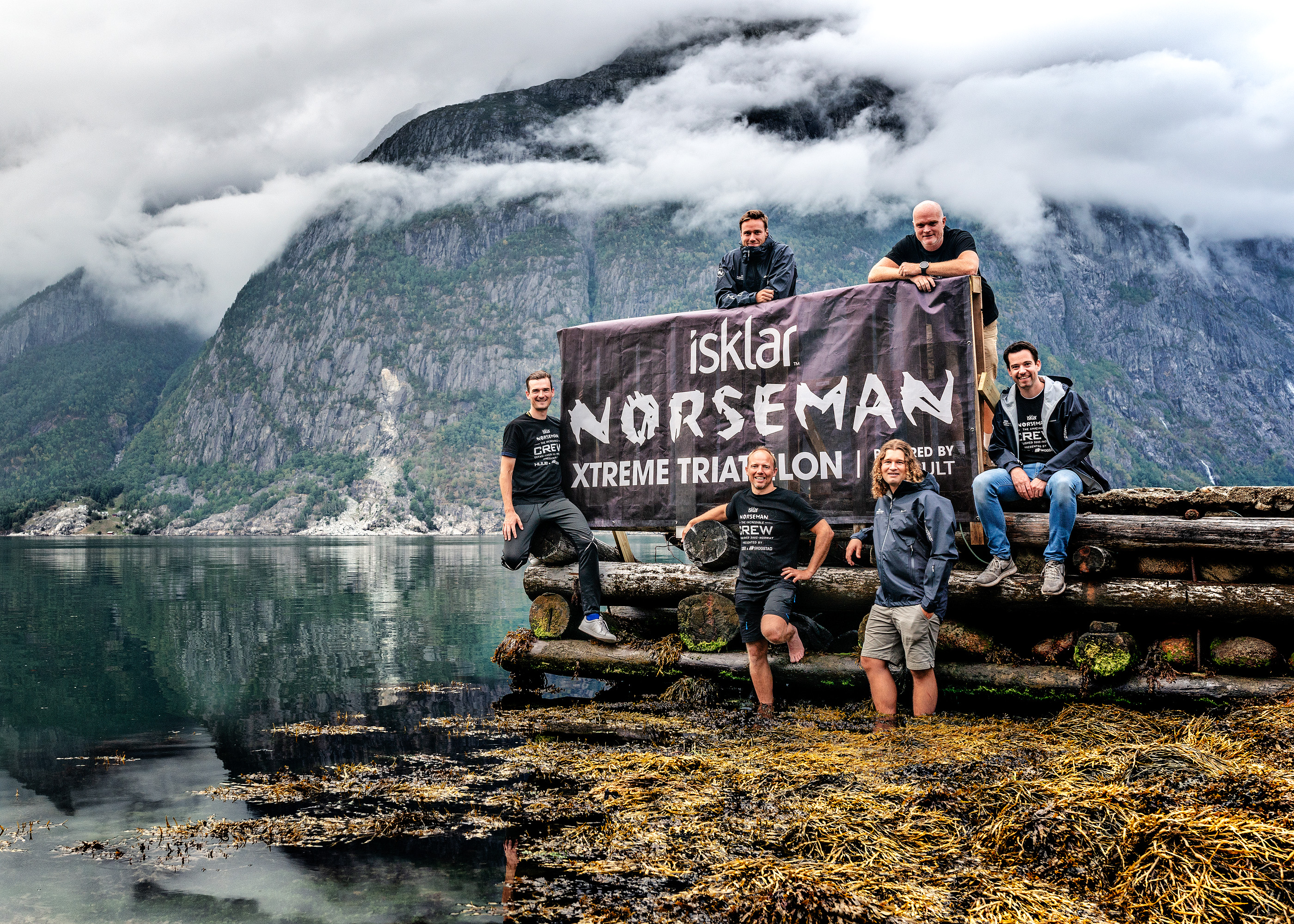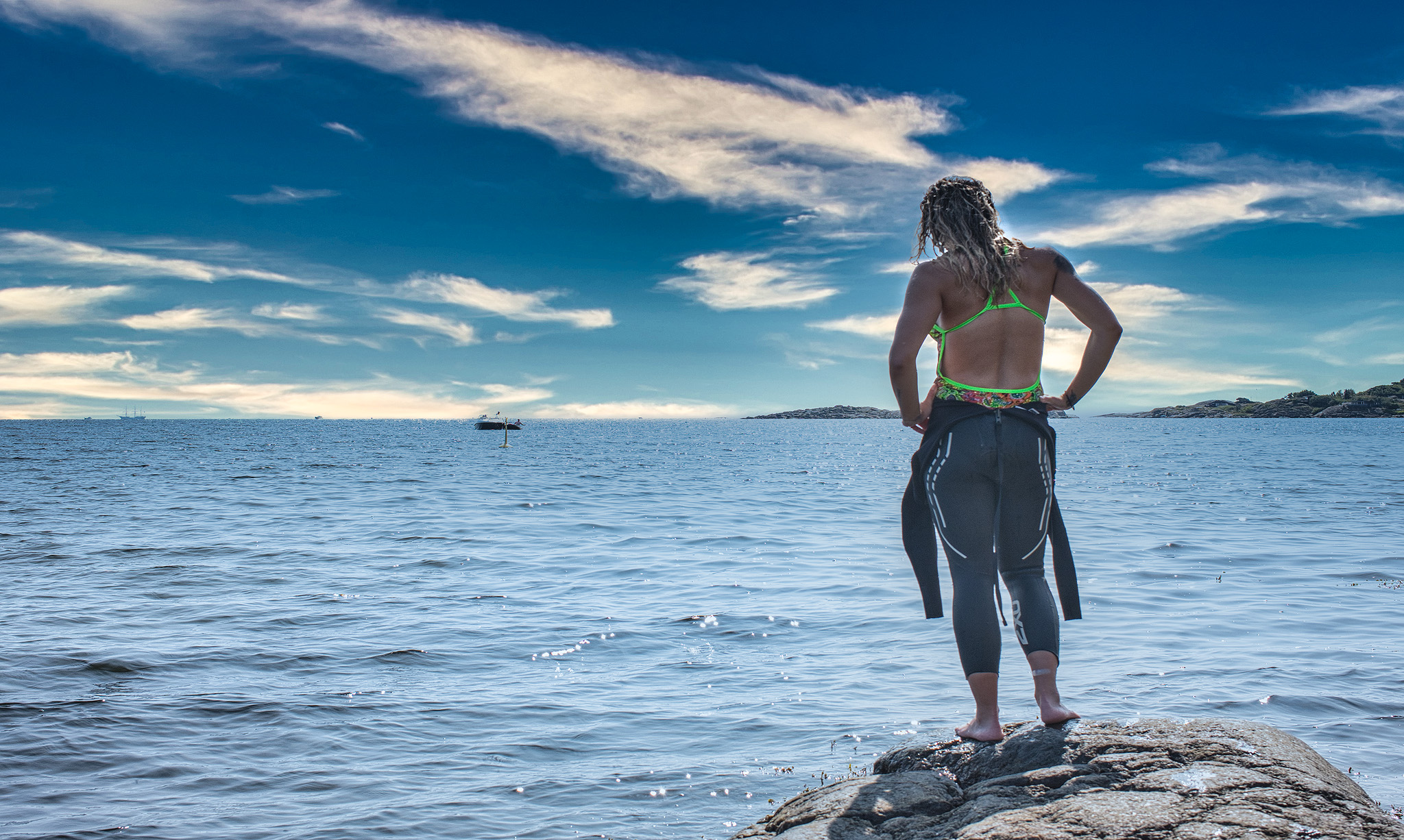In July 2017 I was interviewed by the team behind ÖtillÖ
Jørgen Melau is a Norwegian PhD student at the University of Oslo and Vestfold Hospital Trust, researching how the body responds to extreme
With a medical background as a rescue paramedic with Norway’s air ambulance and a nurse anaesthetist, Jørgen was also an officer in the Armed Forces. He’s done a fair share of triathlons, including six Ironman. “It’s a shame I’ve never done swimrun. Seeing the sport for the first time at Utö, I think I’m in love!”
Jørgen, Safety Director at Norseman Xtreme Triathlon for the past twelve years, is working together with his colleague and supervisor Jonny Hisdal, Norseman’s physiologist. The Norseman is known for its dark, cold swim.
“In 2015, we measured a water temperature of 10°C the day before the race. And we really didn’t know if that would be safe for the athletes,” Jørgen tells me. “So Jonny and I did a test swim on the race course the day before, measuring with temperature pills our core temperature. And we decided to shorten the swim.”
It was at that moment that Jonny, who has been a scientist for several years, suggested Jørgen, should start a PhD and do some real research into this subject. And so he did.
Cold water research projects
As Jørgen is at the start of his research, for now there aren’t many results he can share.
In one of his experiments, there were 20 athletes swimming with a wetsuit in 10°C water in a controlled environment to see how the body react.
“We did all kind of physiological measurements before, during and after, together with other scientists,” Jørgen explains. “We investigated elements like effect on the heart and lungs, temperature, effect of body fat and muscles on core temperature and more.
“Then last year, at Norseman 2016, we took blood samples from many of the participating athletes, before the race, at the finish line, and the day after the race. This was to see specific changes in biomarkers on health, hydration and more. We also did a lung function test.”
Other projects include testing Olympic athletes who are in the qualifying phases of the Tokyo 2020 Summer Olympics, which will be a huge challenge with the city’s heat and humidity. The Norwegian Olympic Training centre did a training camp for the athletes with testing. “The first day tested normal conditions and the second day was in Tokyo conditions. We let the athletes do standardised tests in a room heated to 35°C and high humidity. And then we did all kind of physiological tests on the athletes to see if there were any differences. We are currently publishing all the articles, which we’ll be sure to share when finished.”
Jørgen became involved in Utö after a collaboration agreement between Norseman Xtreme Triathlon and ÖTILLÖ. He then contacted ÖTILLÖ founders Michael Lemmel and Mats Skott, who were very keen about the project and helped to arrange logistics and accommodation at Utö in May 2017. “We had never been in the area before, and I have to say that the Stockholm archipelago is a beauty,” Jørgen admits.
“With swimrun, we are particularly interested in the repeated exposures to the water. We know that the body core temperature will decrease during exposure to cold water but what is also fascinating to us is that the body core temperature decreases for a while after the athlete is out of the water.
“This is called ‘afterdrop’, and is well known in emergency medicine. So, we are trying to determine for how long and how much the afterdrop effect continues.”
With the ÖTILLÖ Swimrun Utö, organisers sent out a request to participants a few weeks before the race, asking if anyone would like to volunteer for a cold-water research project. The return was overwhelming but Jørgen and his team unfortunately could only include 20 athletes as the gear they use is expensive and funds are limited.

“The crew at ÖTILLÖ Utö set us up with a space for our lab at Seglarbaren, at Utö Värdshus, close to the start and finish of the race. The staff were very kind to us,” describes Jørgen.
Before the race start, the twenty selected athletes filled out a 5-minute questionnaire and swallowed a pill that measures the temperature in their intestines every minute and stores the data inside the pill. After the race, the data from the pill was downloaded wirelessly by holding a device near the racer’s body. It’s important to note that the pill has been used in a lot of research projects worldwide and is safe to use.
“At this stage of our research, we are just looking at the body temperature of the athletes,” Jørgen points out. “Later, we also want to include heart rate and heart rate variability (HRV), and possibly also a few other measurements. We really hope to be able to do more research at ÖTILLÖ races, as we gained valuable knowledge during the Utö testing.”
Swimming in cold water
Jørgen emphasises that the research objective is not to show that swimming in cold water is dangerous. “We do not believe it is. We think that sports like swimrun and triathlon, for example, are vital parts of the public health and we very much encourage people to participate in endurance races and recreational activities.”
That being said, there are many factors that play a role in the limits of lower water temperatures, such as how long you are exposed to the cold water, how your wetsuit fits you, your amount of body fat and muscles, air temperature and more. “We will work on this for the next few years, to gain more knowledge.”
For a small number, exposure to cold water can be a risk factor, Jørgen says, adding that several scientists have tried to identify the characteristics of these few people who could be at risk. “We know that sudden exposure to cold water can put a heavy strain on the heart, which can be a risk for a minority, but there is much more to learn on this topic.”
For Jørgen and his research team, the objective first and foremost is to see how the body responds to cold water. “Then we hope to be able to give advice and guidelines to athletes and race directors about how to train and race in the safest possible way.”
For more on Jørgen’s cold water research, follow ÖTILLÖ on Facebook
Article first published in Swimrun Life Magazine Issue #3 (July 2017)


